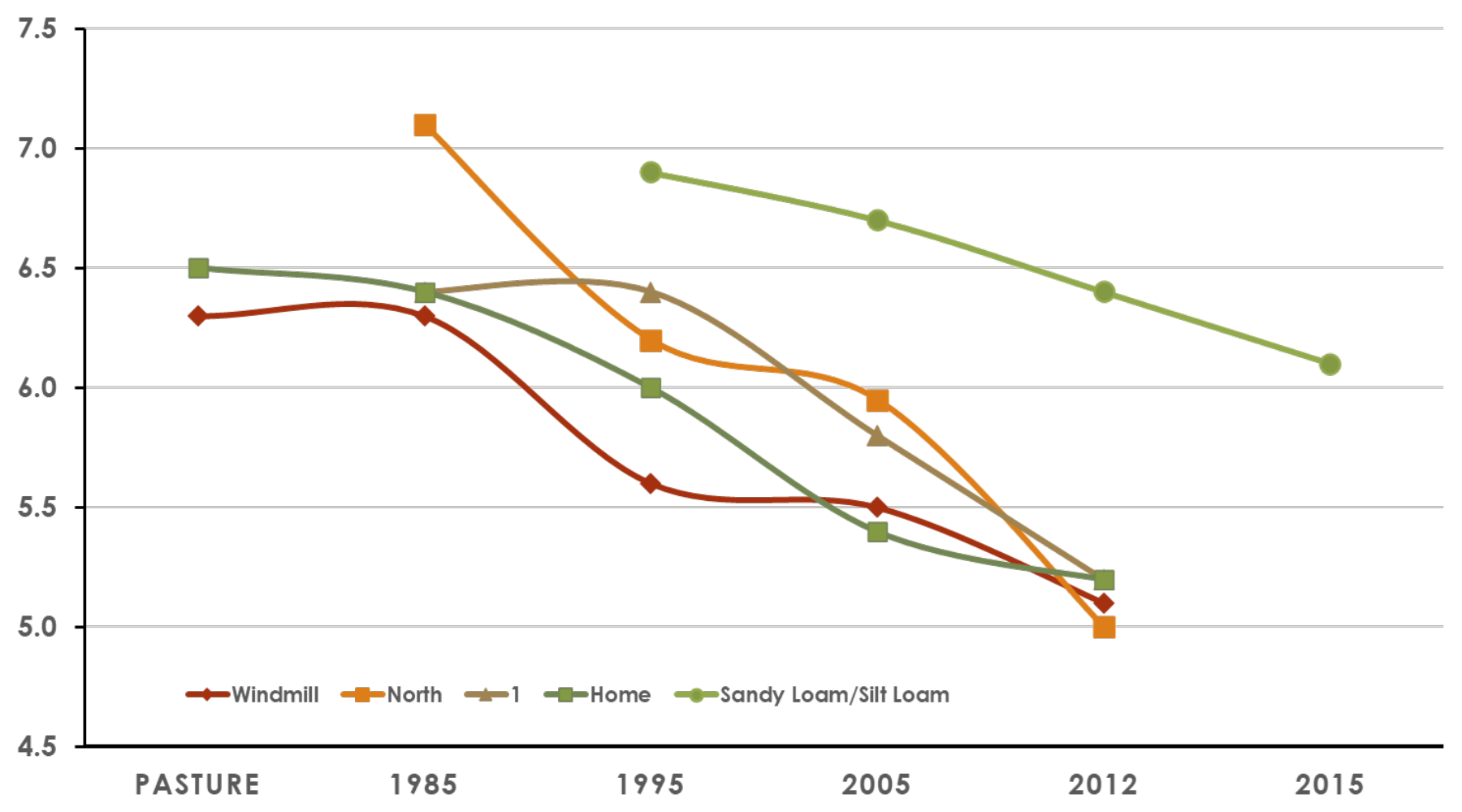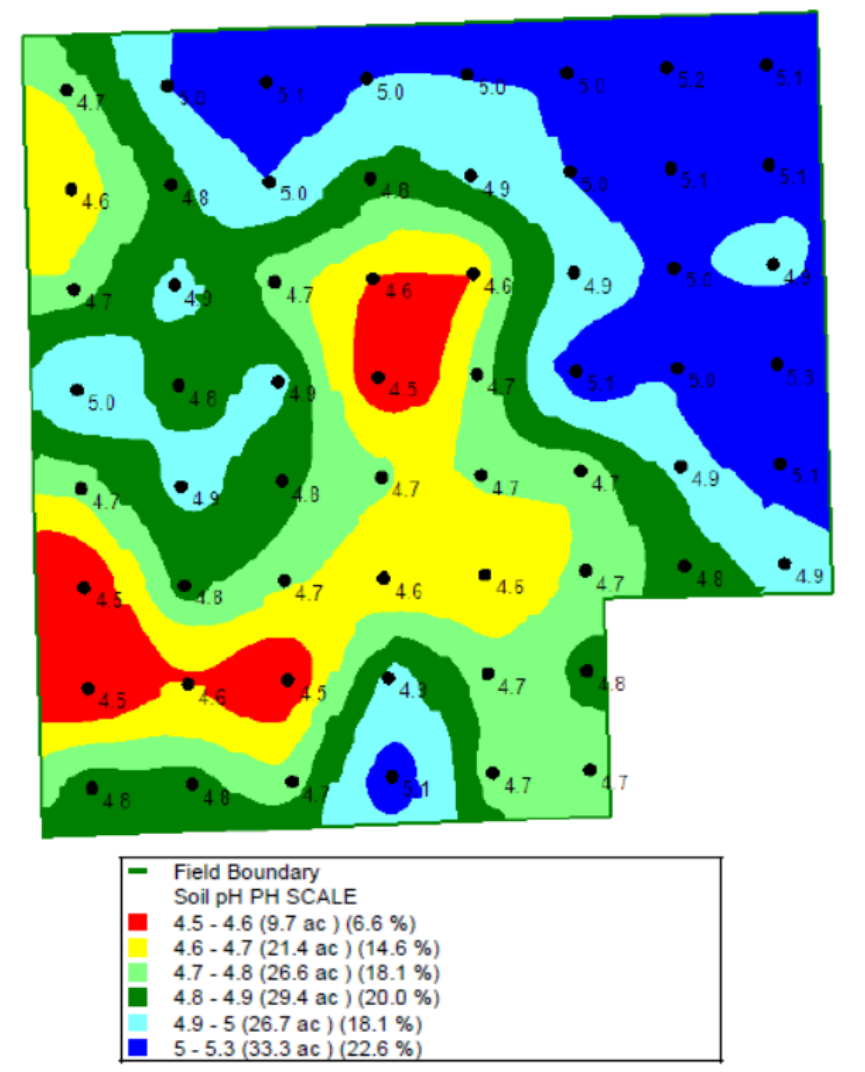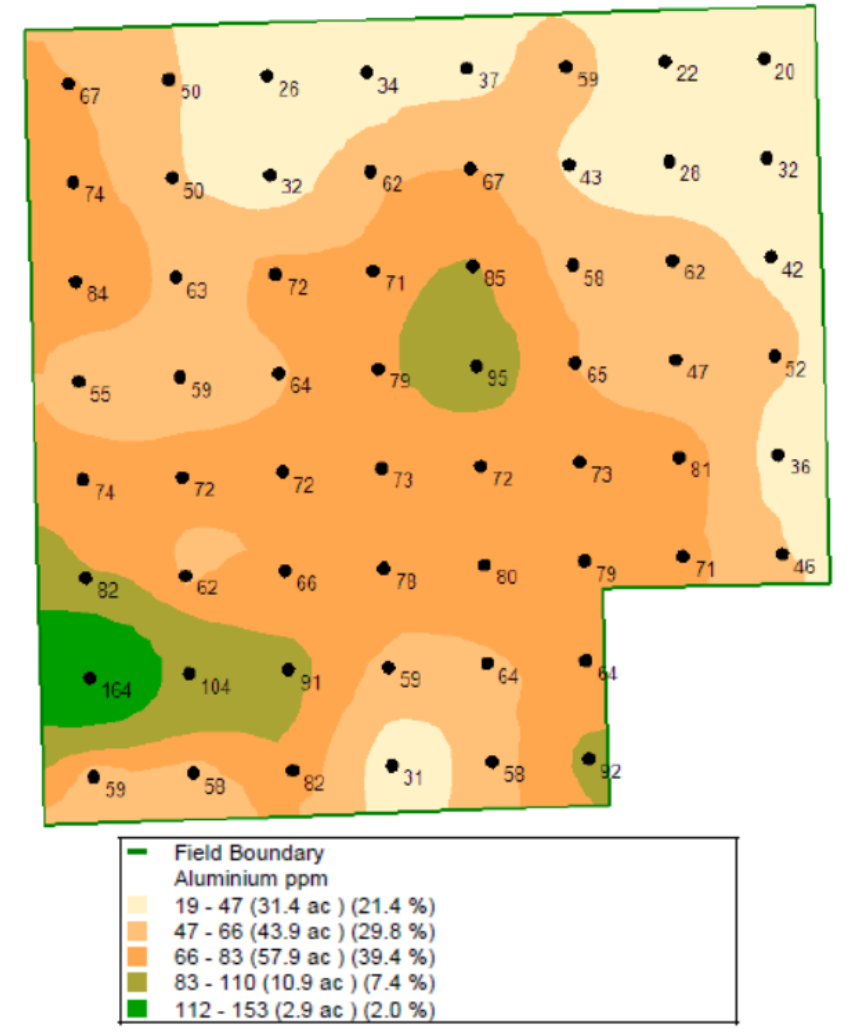⇦ Back to Soil Fertility and Plant Nutrition Home
by David Green, Territory Manager, ServiTech, Inc.
(Oral presentation and pg. 66-68 in Proceedings of 2016 Great Plains Soil Fertility Conference; Denver, Colorado; March 1-2, 2016)
Land in northeast Colorado was generally broken out for crop production between 1890 and 1920. That means many of those soils have been in crop production for 100 plus years, so soil properties continue to change due to tillage, erosion, and production practices. The Great Plains soils are usually thought to have high calcium levels and thus high pH values.
The soils discussed in this presentation have a surface sand layer and have exhibited decline in soil pH, especially in the last 20 years. If there is lime in these soils it tends to be in the subsoils. Common soils affected are the Haxtun loamy sands (Pachic Argiustolls), which tend to be interlaced with Dailey loamy sands (Aridic Argiustolls), Julesburg loamy sands (Aridic Argiustolls), Ascalon fine sandy loam (Aridic Aguistolls) and small areas of Valent fine sands (Ustic Torripsamments).
The common factor among these soils are surface horizons with high sand content and low organic matter, and thus very little buffering capacity. When the soil pH declines below 5.2, aluminum becomes soluble and can affect crop growth. Toxicity to roots and nutrient uptake effects are seen in wheat and corn.
Corn and wheat are the primary rotation crops, with a strong propensity to multiple years of continuous corn production. These are highly productive soils when rainfall is adequate and soil fertility and cover are maintained.
The driving force in this pH change is likely nitrogen fertilizer application. This pH change is largely seen on the dryland production acres although in the last few years some of the adjacent irrigated soils have become a concern too.
Figure 1 shows the pH trend in four cropped fields over the last 30 years and the same data on an adjacent cropped field with sandy loam soil.
Liming is necessary to raise the pH to get the aluminum out of the soil solution. Fields often need other fertilizer elements too. So, we looked at the lime effect of compost and beef feedlot manure, but to make the drastic pH change required it is best to use lime.
Our source for lime is a waste product from the sugarbeet plant in Fort Morgan. This lime source tends to be 65% to 75% effective calcium carbonate (ECC). Two tons of ECC lime applications (three tons of actual product) have raised soil pH back to the level of the surrounding unfarmed pastures. Those rates have held the pH into the sixth to eighth year after application.
Correcting the pH has allowed crop production to recover in these fields, stopping the downward spiral of organic matter levels, since the crop is now adding more residue back to these soils.
¶ Figure 1. Thirty-Year Soil pH History, Northeast Colorado Dryland Fields

¶ Figure 2. Example of pH Variability Across a Field

¶ Figure 3. Aluminum Levels Tend to Follow Soil pH in the Same Field

¶ Supplemental Notes:
1. Dave Green is retired as a professional crop consultant for ServiTech. He provided the crop management advice to the producers that operate the land discussed in this presentation. This includes soil sampling and documenting the field histories since 1981.
2. The pH results for “PASTURE” in Figure 1 came from an adjacent uncropped area assumed to reflect the native conditions before cropping began.
3. The soil pH results “Sandy Loam/Silt Loam” field in Figure 1 was included for comparison. This field has a finer texture with a higher clay content than the other four fields. It has maintained a higher soil pH that the other four fields in recent history, but is showing the same trend for declining pH.
4. The trends discussed in the presentation were attributed to the long-term use of nitrogen fertilizer and the accompanying effect on soil pH.
5. Crop year 2012 was marked by severe drought in northeast Colorado. This typically resulted in a sharp decline of soil pH as measured in the standard 1:1 soil:water mixture by the ServiTech Laboratory. This is a common effect that is widely observed in drought situations.